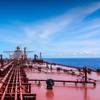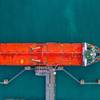‘VWGate’ has raised a flag for managers and technicians in the transport business. ‘Efficiency’ used to be left to the market, but the intrepid twins, consumer health and climate change, have changed all that, says a report from Clarkson Research Services.
Shipping boasted of being the most ‘efficient’ transport mode, but the twins took a look at what was coming out of the funnel and the rest is history (as is anyone not paying attention to emission regulations).
The shipping industry has been squeezing diesel technology for fifty years and faces similar problems to the VW engine designers. The technical cupboard appears fairly empty, so the opportunities for improving performance look slim. The challenge is to find another way to measure and improve performance.
The starting point is operational performance and a surprising ‘big picture’ statistic is that tanker performance in terms of tonne-miles/dwt has fallen 25% in the last decade and is 44% lower today than in 1974 . This is partly due to the shipping cycle, but a more important reason may be the change in the way oil transport is organized.
In 1974 the system appeared to be super-efficient. ‘Productivity’ of 42,000 ton-miles/dwt was over 75% of the ‘theoretical maximum’ (estimated at about 55,000 tonne-miles/dwt). Until 1973 freight was generally about half the CIF cost of oil and transport was closely managed by the oil majors who controlled most of the fleet.
But in the 1980s things changed. Oil cost over $30/bbl and freight was no longer of strategic importance for oil majors. Furthermore, more oil was shipped by traders with no interest in logistics; freight was just a cost (later they discovered that by owning ships they could ‘double dip’ on their cargoes).
Progressively the oil majors drew back from managing logistics and took ships from the spot market, a strategic decision which the ‘Exxon Valdez’ incident in 1989 reinforced.
The ‘efficiency’ of tanker transport (in terms of cargo-miles per unit of vessel capacity) never recovered from the dis-engagement of the oil majors. Productivity slumped to 25,000 tonne-miles/dwt in the 1980s recession and only increased to 31,000 tonne-miles/dwt when the market recovered in 1997. At the peak of the ‘super-boom’ in 2004 the fleet operated at only 33,000 tonne-miles/dwt.
Today it is back down to 24,000 tonne-miles/dwt. As owners celebrate booming rates, the intrepid twins must be wondering what the industry is up to. Tankers are delivering almost half as much oil transportation (on a tonne-mile/dwt basis) as they were 40 years ago (with the spot market more concerned with managing ‘productivity’ in the context of the earnings environment).
Not many other industries could say that they have halved ‘efficiency’ and lived to tell the tale. Of course you could just bury the figures and carry on as usual (which seems to have been VW’s strategy). Or you could start thinking about what to do about it.
Is 1970s-style logistics a lost art? Freight may not be a big deal for cargo interests, but meeting regulatory targets should be.










